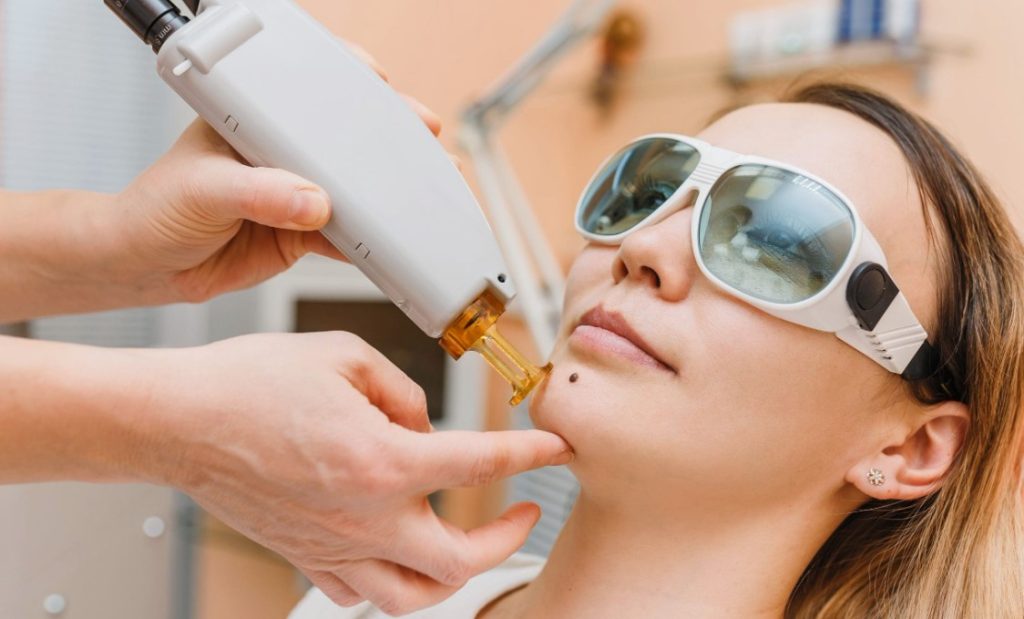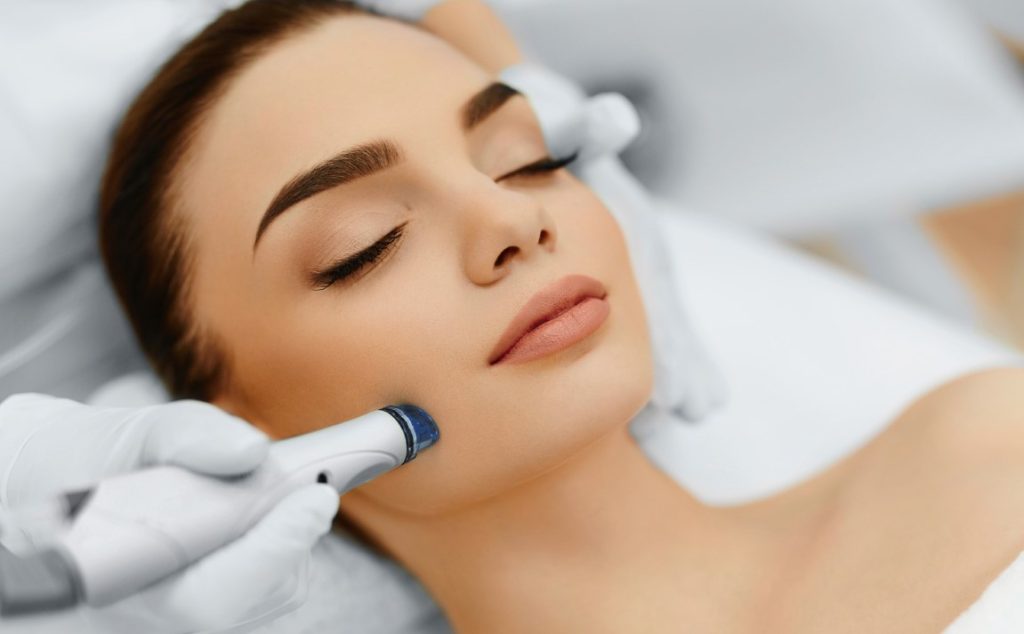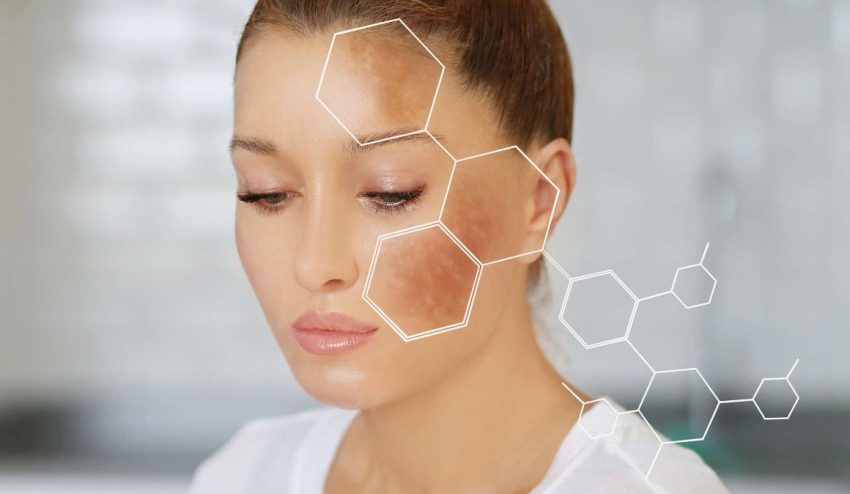Hyperpigmentation, often referred to as hypermelanosis or melasma, is a condition characterized by the darkening of certain areas of the skin due to increased melanin production. This can manifest either as localized spots or more diffuse areas without clear boundaries. Hyperpigmentation can result from various factors, including genetics, hormonal changes, ultraviolet (UV) exposure, and skin damage. SMART AGE TECH offers advanced solutions to address these pigmentation issues effectively.
Causes of Facial Pigmentation in Women
The primary cause of pigmentation on the face and body is the disruption in melanin synthesis. Several factors contribute to this condition:
1. Genetics: Individuals with the first phototype skin (fair skin) are predisposed to having many freckles from birth. Sun exposure exacerbates this condition, increasing the number of age spots over time.
2. Ultraviolet Light: Prolonged exposure to direct sunlight, even with sunscreen, can activate melanocytes and lead to the formation of atypical cells. Age spots can appear years after excessive tanning.
3. Hormones: Hormonal imbalances during pregnancy, menopause, endocrine disorders, and the use of hormonal medications can lead to pigmentation. This is due to fluctuations in estrogen and progesterone levels, making women more susceptible to skin blemishes than men.
4. Age: As skin ages, it becomes more vulnerable to UV radiation and external factors, resulting in age spots.
5. Skin Damage: Injuries to the skin, acne, and the use of irritating products can trigger pigmentation as the skin heals.

Types of Pigmentation
1. Chloasma (Melasma): These are brown spots without clear shapes, often hereditary or occurring during pregnancy, typically appearing on the cheeks, upper lip, chin, and forehead.
2. Solar Lentigo: Small, flat pigmented spots that can appear on any part of the face, décolleté, and back of the hands due to sun exposure.
3. Freckles (Ephelids): Multiple small spots that usually emerge around the age of two. Their number can increase with time, and they may lighten or disappear by the age of 20.
4. Post-inflammatory Pigmentation: This occurs as a response to skin barrier disruption caused by infections, allergic reactions, burns, or bruises.
5. Moles and Nevi: Common types of pigmentation that can appear from childhood and continue to develop throughout life.
Starting Treatment for Pigmentation
To effectively treat pigmentation, it’s crucial to identify its underlying cause. Often, age spots reflect the internal state of the body, signaling potential asymptomatic conditions. Therefore, combating pigmentation requires a comprehensive approach, including cosmetic treatments, a balanced diet, and a healthy lifestyle.
Modern Technologies for Removing Pigment Spots
1. Laser Therapy: One of the most effective methods, laser therapy uses a strong beam of light at a specific wavelength to target and destroy melanin in pigment spots without harming surrounding tissues. Noticeable results can be achieved after a few sessions.
2. Intense Pulsed Light (IPL): This technology utilizes a broad spectrum of light to treat age spots. The light energy is absorbed by the pigment, causing it to break down. IPL is effective for various types of pigmentation and is often a more affordable option than laser therapy.
3. Fractional Rejuvenation: Combining laser energy and microradiation, this innovative technique creates microtraumas on the skin’s surface, stimulating natural renewal and regeneration. This reduces pigmentation and improves overall skin condition.
4. Combined Methods: Depending on the type and depth of pigmentation, a combination approach may be recommended. For instance, combining laser therapy with topical creams can yield optimal results.

Comprehensive Treatment Approach
Treating pigmentation involves more than just cosmetic procedures. It requires a holistic approach, including:
– Consultation with a Dermatologist: A professional can help determine the cause of pigmentation and recommend appropriate treatments.
– Healthy Lifestyle: A balanced diet rich in antioxidants, vitamins, and minerals supports skin health. Avoiding excessive sun exposure and using broad-spectrum sunscreen is crucial.
– Skincare Routine: Using products designed to target pigmentation, such as creams containing ingredients like hydroquinone, vitamin C, retinoids, and alpha hydroxy acids (AHAs), can help lighten dark spots.
Home Remedies and Natural Treatments
While professional treatments are often the most effective, several home remedies can help lighten age spots and improve skin tone:
1. Aloe Vera: Known for its soothing properties, aloe vera can help lighten pigmentation. Apply fresh aloe vera gel directly to the spots and leave it on for 30 minutes before rinsing off.
2. Lemon Juice: The natural bleaching properties of lemon juice can lighten age spots. Apply fresh lemon juice to the affected areas and leave it on for about 15 minutes before washing it off. However, be cautious as lemon juice can make the skin more sensitive to sunlight.
3. Apple Cider Vinegar: The acetic acid in apple cider vinegar can help lighten pigmentation. Mix equal parts apple cider vinegar and water, apply to the spots, and rinse off after a few minutes.
4. Green Tea Extract: Applying green tea extract to the skin can help reduce pigmentation due to its antioxidant properties.
5. Milk and Honey: A mixture of milk and honey can help exfoliate the skin and lighten age spots. Apply the mixture to the face, leave it on for 20 minutes, and rinse off with warm water.
Preventive Measures
Preventing age spots and hyperpigmentation involves protecting the skin from factors that trigger melanin production:
1. Sun Protection: Use a broad-spectrum sunscreen with an SPF of at least 30 every day, even on cloudy days. Wear protective clothing, hats, and sunglasses when exposed to the sun.
2. Avoid Peak Sun Hours: Try to stay out of the sun between 10 a.m. and 4 p.m., when UV rays are the strongest.
3. Regular Skin Checks: Regularly check your skin for new spots or changes in existing ones. Early detection of skin issues can lead to more effective treatment.
4. Healthy Diet: Consume a diet rich in fruits, vegetables, and whole grains to provide your skin with the nutrients it needs to stay healthy and resilient.
5. Avoid Skin Trauma: Be gentle with your skin to avoid irritation and injury that can lead to pigmentation. Use mild skincare products and avoid harsh treatments.
Conclusion
Achieving an even, flawless skin tone involves a combination of advanced technologies and traditional methods. Consulting with specialists, such as those at SMART AGE TECH in Dubai, can provide access to a wide range of products and treatments tailored to combat skin pigmentation effectively. Whether through laser therapy, IPL, fractional rejuvenation, or a combination approach, modern techniques offer promising solutions for those seeking to address age spots and hyperpigmentation.
Taking a comprehensive approach to treating and preventing pigmentation can help maintain healthy, clear skin. By combining professional treatments with a consistent skincare routine, protective measures, and a healthy lifestyle, individuals can effectively manage and reduce the appearance of age spots and hyperpigmentation.

I specialize in administrative technologies and am responsible for training other employees to use advanced systems and applications, including accounting software, mass communication procedures and organizational applications
